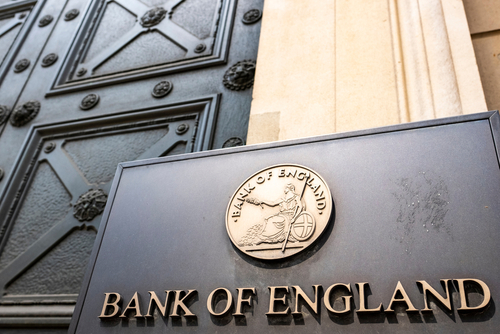

This article is only available to Macro Hive subscribers. Sign-up to receive world-class macro analysis with a daily curated newsletter, podcast, original content from award-winning researchers, cross market strategy, equity insights, trade ideas, crypto flow frameworks, academic paper summaries, explanation and analysis of market-moving events, community investor chat room, and more.
Summary
- The BoE cut 25bp, in line with economist consensus. We had been low conviction on the decision but have long been dovish on the BoE outlook and positioned accordingly.
- The vote was tight, 5:4 in favour of cutting. As expected, forecasts and comments were hawkish (decision ‘finely balanced’, ‘upside risks to outlook’).
- However, the decision is less hawkish than the sum of its parts. It was Haskel’s (dissenter) last meeting, and the more hawkish near-term forecasts lower the bar for an undershoot.
- The market prices one more cut in November. If data undershoots BoE forecasts as we expect, a September cut is possible.
Market Implications
- We are long UK gilts and short GBP – both performed well post-BoE.
Do Not Read Too Much into the Hawkishness
The BoE cut 25bp to 5.0% on Thursday, in line with analyst consensus. We believed the BoE should cut on the dovish economic fundamentals, but we were low conviction given recent data volatility and recent hawkish comments.
We had warned comments were likely to be hawkish; they were. The vote split was close (5:4 in favour of cutting). Bailey and Lombardelli justified the decision as the BoE being more confident inflation is returning to target, but also noted it was ‘finely balanced’, and the outlook had upside risks. Meanwhile, the MPC’s forecasts were revised more hawkishly.
An upward revision to the forecasts may clash with being more confident inflation is normalising, but this likely reflects a change in approach of models (towards weighting based on probability of different scenarios).
We are not overly concerned by the hawkish framing of the cut. We still think the BoE must cut more than the market is pricing:
- The four who voted for a pause (Mann, Haskel, Greene and Pill) had all come out hawkish in recent comments (i.e. there were no great surprises). Plus, Haskel will be replaced by the next meeting.
- The surprisingly hawkish near-term forecasts set a lower bar for data to undershoot ahead.
We remain positioned for relative BoE dovishness vs the Fed and are long UK gilts. Both performed well on the BoE decision.
Data Dependent (in their Own Way)
The word of the day was ‘scenario’, with Bailey stressing that the BoE are considering three possibilities (Table 1). He made little comment on the future rate path, noting they had made this decision on the available data, and that future data will determine future cuts. This was certainly not a definite rejection of back-to-back cuts (that could end up being the case – more on that below).
Nor did it sound like data dependence as per the ECB. More important than specific data prints, the BoE will use outturns to guide which of the three scenarios will most likely materialize.
As such, the BoE forecasts are defined by a probability weighting of the three scenarios. This explains the widening of the spread of mean over modal inflation forecasts (Chart 1). So, for example, if the evidence for Scenario 3 were to diminish, the mean expectation would fall more in line with the mode.
However, even within this framework, the near-term forecasts are less driven by the different scenarios (the spread widens further out) yet remains quite hawkish.
More Room for Inflation Misses
We noted June inflation saw support from accommodation prices, partly by Taylor Swift concerts. We expect some of this effect to fade in the July number. We have pencilled in a modest slowing of inflation in that month versus 2023. If this is the case, a near-term inflation undershoot across headline, core and services is highly likely (Charts 2, 3, 4).
In that regard, while the raising of forecasts is (all thing equal) hawkish, that it came alongside a cut may suggest the BoE is more comfortable with near-term overshoots vs target. That is, their reaction function is becoming more dovish.
More Cuts Ahead
Overall, the presser and the forecasts leave open the possibility to more cuts in the near-term, particularly if data performs as we expect. By the 19 September meeting, we will have received the June (13 Aug) and July (9 Sep) labour market numbers, and the July (14 Aug) and August (18 Sep) inflation prints.
If our current forecasts hold over these prints, come September, the BoE will be in a strong position to cut again. At this stage, the market is pricing little probability of this, suggesting our dovish BoE trades continue to perform ahead.
.
(The commentary contained in the above article does not constitute an offer or a solicitation, or a recommendation to implement or liquidate an investment or to carry out any other transaction. It should not be used as a basis for any investment decision or other decision. Any investment decision should be based on appropriate professional advice specific to your needs.)
